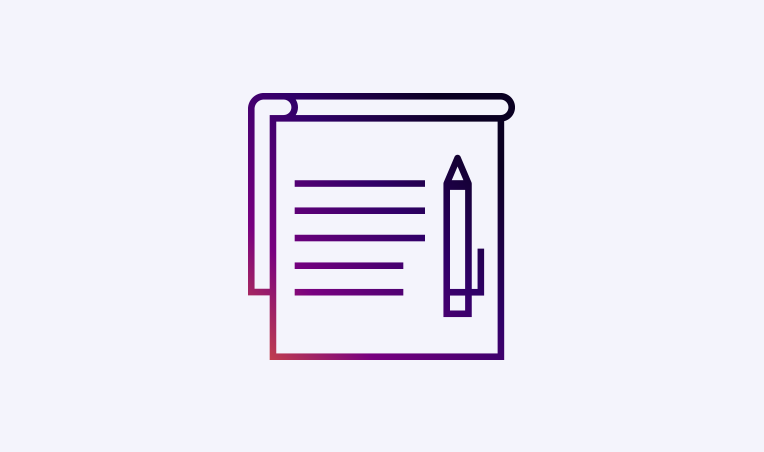How Improving Page Speed Boosts Your SEO Rankings
Image

After months of preparation, learning, and investing, you finally have a full-fledged website up and ready to go! The design is attractive yet simple, the text is crisp and punchy, and you’re excited to see how customers react. Before making the site live, you conduct a quick test run only to realize that the pages aren’t loading as fast as you’d hoped.
All of that hard work wasn’t wasted. There’s just something wrong with the site speed or page speed. Either way, something needs to be fixed since both of these metrics play a major role in the performance of your site. Not only will that waiting time turn away visitors, but it’s also going to hurt your site’s SEO ranking. Here, we’ll talk about page speed, why it’s important, and how you can improve it.
What Is Page Speed?
Page speed measures the amount of time it takes for content on a particular webpage to load. It’s easy to get this term confused with other words related to site optimization like “site speed,” which refers to the average loading time of more than one sample page on a given site. Page speed, on the other hand, specifically refers to the loading time of a singular webpage. Many factors ultimately determine page speed, including server quality, file sizes, image compression, and more.
That being said, there are some important distinctions to be aware of when talking about this metric. While having a seemingly straight-forward definition, there are different ways to measure page speed. Here, we’ll outline three of the more common examples:
Time to First Byte (TTFB): This metric assesses how long until a page begins the loading process.
Do you know that white screen that sometimes appears just before a web page fully loads? TTFB in action.
Fully Loaded Page: This measurement examines the time for 100% of the desired page to load. This is the most direct way to measure page speed.
First Meaningful Paint/First Contextual Paint: This is the time needed to load a sufficient amount of resources on a webpage to actually read what’s there.
This is an important metric because it gives users the ability to better understand how site visitors experience and interact with the webpage. For example, maybe page speed insights suggest a blog post takes 15 seconds to load. While that might seem like a lot of time (which it is), this page speed metric doesn’t give you enough information alone.
It might turn out that visitors are met with the first meaningful paint in two seconds, so they interact with the page quickly.
Page Speed and SEO
If you have any hopes for ranking your site high on Google searches, then you should focus on improving your site’s page speed. Page speed insights can give you an accurate idea of how your site will perform with search engines.
To claim that coveted spot on the first page of Google, your page speed will need to compete with the loading time of the top 10 organic page results. Otherwise, your page will be relegated to the second or third page of Google where most searchers never venture.
Google puts a premium on page speed because it’s a way of determining a site’s quality and gauging the user experience. Sites that perform well with this metric are rewarded with a high ranking. When optimized, page speed leads to more traffic from organic searches and, ultimately, a more successful website overall.
While it’s fairly easy to explain, you can better grasp the impact of page speed on SEO by taking a look at some real numbers. Fortunately, Backlinko conducted a thorough study that examined 11.8 million Google search results and the metrics of the top 10 pages. The purpose of the study was to determine which characteristics were common among the top-performing sites.
The results quickly supported what SEO experts assumed all along: page speed plays a major role in ranking sites. The quicker your page loads, the higher it’ll rank in Google search results. In the study, all of the pages that ranked highest for a particular search had quick page speeds. It was evident that site creators had made an extra effort to optimize their loading time.
The study also found a connection between top-ranking pages and low bounce rates. Results on the second or third page of Google seemed to have notably higher bounce rates. These findings were confirmed by Google’s new industry benchmarks for page speed. According to the document, pages with longer load times experience higher bounce rates.
As you can see, pages that take longer than even five seconds to load can expect a bounce rate of 90%. With each second beyond that, the chances of someone leaving your page before it loads raises exponentially.
Another telling result of Google’s latest page speed report is the vast majority of sites perform quite slowly, no matter the industry.
The graph clearly illustrates that many pages and sites fall below the ideal loading speeds. Interestingly, pages in the tech industry have one of the highest average speeds hovering just over 11 seconds. This is nearly four times the optimal loading speed of three seconds or under.
The good news is those who speed up website loading times will have no trouble ranking on the first page of Google. The bad news is the feat is clearly harder than most people assume, as many page builders seem to miss the importance of site speed for SEO.
Ways to Diagnose Page Speed
Now that you understand how page speed and site speed can impact site ranking, it’s time to put your page to the test to see how it performs. Given the averages we’ve seen above, there’s a good chance your site could use some major improvements. While some immediate changes could positively impact your site’s loading time, it’s important to first get accurate page speed insights. The best way to do this is by running a page speed test.
The Pantheon Website Speed Test is a great place to start when diagnosing your page speed. All you have to do is input your page’s URL, your region for accuracy, and an associated email:
Once you hit “Start Speed Test,” you’ll be met with page speed insights to help you get an accurate idea of how your page is performing. The final report will let you know what’s going well, what needs to be improved, and all other information needed to speed up website loading time.
As you can see, everyone has room for improvement. But this accurate page speed test and the resulting page speed insights will be invaluable when making necessary changes to optimize a page’s performance. In the results, you’ll also find a clear outline of individual page details, making it easier to determine what needs to be optimized and what’s performing well.
With these page speed insights, you can easily determine what areas of your site can be improved. Instead of wasting time and energy by troubleshooting or simply guessing, this information allows you to target problem areas with precision.
Fortunately, there’s a dedicated Google page speed test for mobile searches. And you don’t even have to leave your desktop. Simply visit Test My Site to give it a shot. Input your domain and press enter.
After a few seconds, you’ll have a detailed report with page speed insights and other valuable information to help you understand the performance of your mobile site. Keep in mind that the ideal site speed is three seconds or less. The results will also provide some ways to improve your mobile page speed SEO and industry comparisons to see how your site stacks up against the competition.
How to Improve Page Speed
Once you have an accurate idea of the page speed you’re dealing with, it’s time to work towards improving this performance. Be sure to reference the results of the page speed test to see which areas require the most attention. This is not only a time-saver, but it also makes sure you’re getting the most return for your efforts. Generally, here are some of the best ways to improve page speed:
Optimize your site’s code: Code plays a large role in the performance of your site, especially when it comes to loading time. Be sure to remove irrelevant characters, commas, spaces, and other unnecessary items for quicker load times.
Allow for compression: Sometimes, users don’t have the connection required to optimally load your web page as-is. With a compression-enabling application, your page can automatically reduce file sizes to load quicker in these instances.
Use smaller images: We all want that crystal-clear quality, but using smaller images can work wonders for improving page speed. It’s important to find a balance between image quality and image size.
If you want to learn about more ways to improve page speed, check out our recent blog post Five Ways to Speed Up Your Website, and Tips for Testing where we go into greater detail.
Whether you’re using a website as a virtual storefront, a sales funnel, or just as a way to connect with customers, it’s crucial to optimize page speed. Visitors will be more likely to stick around when load speeds are quick. Your page will also be more likely to rank on the first page of Google, leading to a massive improvement in organic visitors—a critical metric for successful sites. Feel free to contact us today to learn more.


